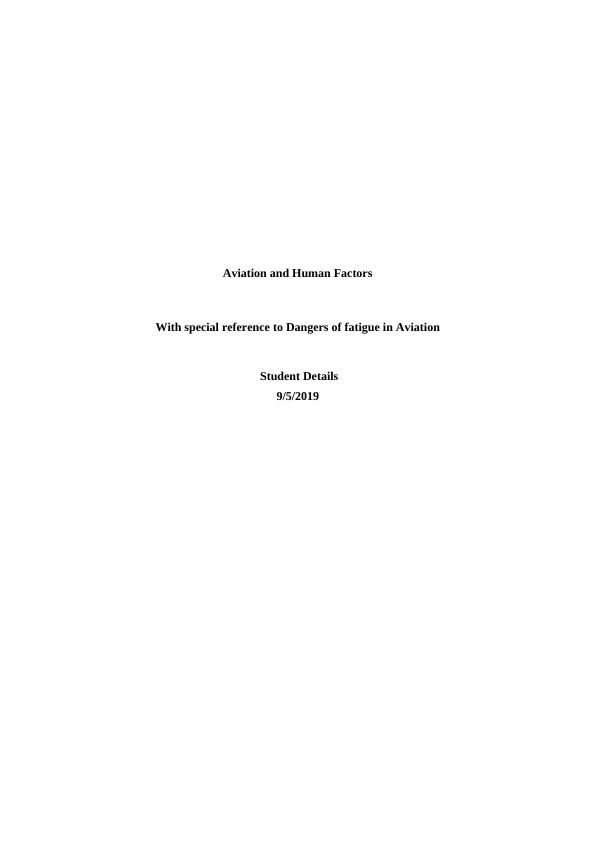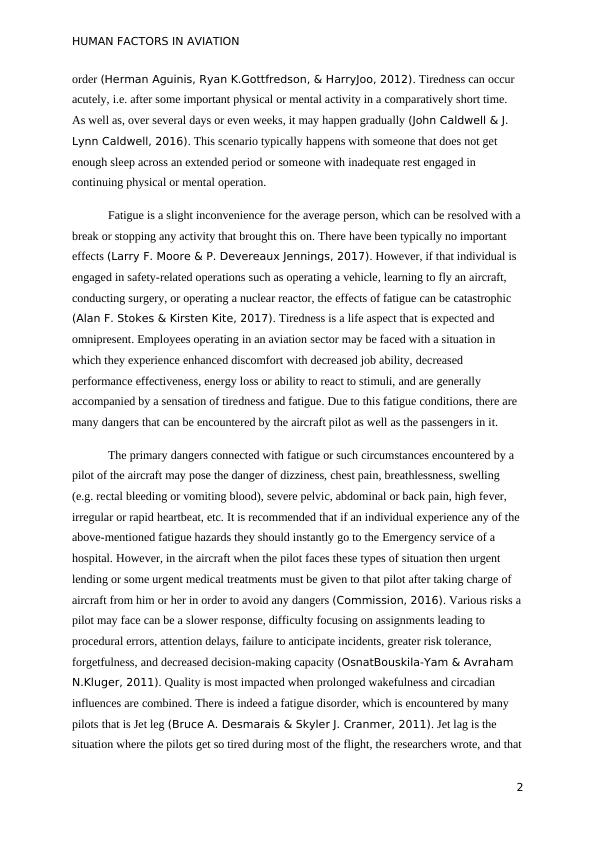Aviation and Human Factors: Dangers of Fatigue in Aviation
This is an essay assignment on the topic of fatigue. The assignment requires the student to discuss what fatigue is, how it arises, the dangers associated with it, and provide an example of an actual fatigue event. The presentation, expression, mechanics, referencing, and structure of the essay will also be evaluated.
Added on 2023-01-05
About This Document
Aviation and Human Factors: Dangers of Fatigue in Aviation
This is an essay assignment on the topic of fatigue. The assignment requires the student to discuss what fatigue is, how it arises, the dangers associated with it, and provide an example of an actual fatigue event. The presentation, expression, mechanics, referencing, and structure of the essay will also be evaluated.
Added on 2023-01-05
End of preview
Want to access all the pages? Upload your documents or become a member.



